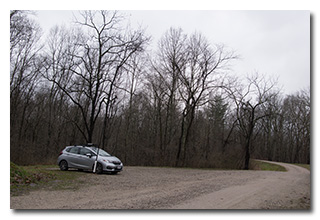
by William Eric McFadden
From the wildlife area's website:
-
Abundant native game species include the gray squirrel, wild turkey, and white-tailed deer. Lesser numbers of fox squirrel and ruffed grouse are found on the area. Cottontail rabbits occur in small numbers in the reverting fields. All of the furbearers common to southeastern Ohio are found on the area. Approximately 80 species of birds can be seen or heard on the area in a year’s time. Included are cedar waxwing, white-eyed vireo, red-eyed vireo, blue-winged warbler, prairie warbler, yellow warbler, hooded warbler, indigo bunting, Northern mockingbird, wood thrush, Acadian flycatcher, mourning dove, and red-tailed hawk.
Pictures
Description
 On Sunday, January 2, 2022, one member of the Southeast Ohio Radio Adventure Team
performed a successful impromptu activation of Waterloo Wildlife Area in Ohio as part of the Parks on the
Air (POTA; link) program.
On Sunday, January 2, 2022, one member of the Southeast Ohio Radio Adventure Team
performed a successful impromptu activation of Waterloo Wildlife Area in Ohio as part of the Parks on the
Air (POTA; link) program.
On a cold, gray, and wet early-January afternoon following several days of unseasonably warm weather, Eric McFadden, WD8RIF, returned to Waterloo Wildlife Area, arriving at about 1730 UTC. Eric quickly deployed his 28½' wire antenna on his 31' Jackite telescoping fiberglass mast and drive-on base and set up his KX3 inside the car. Eric was on the air at 1735 UTC.
As at previous visits to this location, Eric was pleased to find he had sufficient cell-signal at this location to use the POTA Spots website (link) to spot himself and to look for possible park-to-park (P2P) QSOs.
Finding himself a frequency on 40m, Eric spotted himself and began calling CQ. His first QSO came at 1738 UTC with his good friend K8RAT in central Ohio. QSOs came very quickly, with Eric's twenty-first QSO coming at 1759 UTC with WB3GBL in Virginia.
In all, Eric made twenty-one QSOs in twenty-four minutes. All of Eric's QSOs were CW and were made at the 5-watt level.
(return)